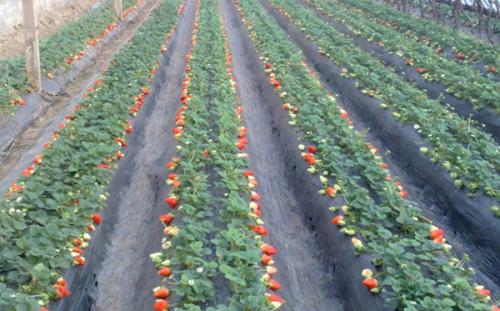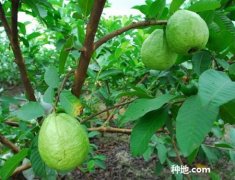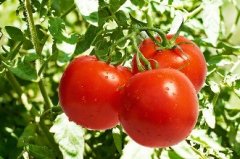Strawberry planting techniques and strawberry cultivation methods, strawberry cultivation and management techniques
(i) Coordination of environmental choices and related measures
crop rotation
Perform soil diagnostic analysis
soil improvement
Surrounding environment free of soil, air and water pollution
(ii) Weed control methods
Herbicides are weeded by manual or mechanical cultivation without the use of chemical herbicides.
Cropping or crop rotation to control weeds.
(3) Fertility management methods
Do not use chemical fertilizer, completely apply organic fertilizer, with self-storage fermentation compost is appropriate, and organic fertilizer must not contain chemical synthetic additives, etc., and can be used as topdressing organic fertilizer.
Strawberry seedling stage and growth period can be inoculated and used phosphorus dissolving bacteria and mycorrhizal fungi and other beneficial microorganisms.
When soil organic matter content is less than 2%, the recommended amount of compost can be used up to 20 tons. If the content is higher than 2%, the application can be reduced, but it still needs 6~10 tons.

(4) Pest control methods
Pest Control Recommendations
Large-scale long-term cultivation of applied pheromone to trap adults
a. Litoral moth: 4 traps per hectare.
b. Spodoptera exigua: 8 traps per hectare.
Application of microbial insecticides-control of insect larvae (lepidoptera)
a. 1000-3000 times of Bacillus thuringiensis.
b. Beauveria bassiana or Metarhizium nigrum.
It releases basic chrysophora (40,000 eggs/minute), which can prey on leaf insects, thrips, aphids and lepidopteran larvae and eggs.
Application of non-pesticide substances
a. Combined with the release of basic chrysophora, spraying vinegar 200 times, can control leaf and so on.
b. Garlic extract or azadirachtin can be used to control insects, thrips and aphids.
c. Sweet and sour liquid can be applied appropriately.
Disease control suggestions
Grey mold disease:
a. Remove diseased leaves or fruits.
b. Microbiological agent DCB-1A(Centre for Biotechnology).
Powdery mildew:
a. Remove diseased leaves or fruits.
b. Microbiological preparation DCB3(Centre for Biotechnology).
Bacterial wilt:
a. 600 kg/min of S-H soil additive applied one week before planting.
b. selecting healthy seedlings.
Rhizome nematodes:
a. Using mycorrhizal fungi to accompany seedlings in seedling soil, re-transplantation can increase resistance.
b. Chitin (crab shell powder) is applied to the soil during preparation or basal fertilizer.
General prevention:
a.
Soaking soil before planting or planting green manure crops, generally sesbania as the bulk, sesbania cover after soaking for more than 2 weeks.
b.
Before planting, the soil is covered with plastic and sterilized by solar energy.
c.
Interplanting garlic, onions and other contraindications to avoid crops.
d.
Soil improvement materials such as bittern ash or silicate slag may be applied as appropriate.
- Prev

How to cultivate guava: cultivation techniques and planting time of guava
Selection and maintenance of environmental conditions for organic cultivation of guava; guava has a large cultivated area in central and southern Taiwan and is one of the most important tropical fruit trees. The organic cultivation of guava must first have good environmental conditions, and the selected orchards shall not have air pollution and water.
- Next

Tomato diseases and insect pests: control of tomato rot and tomato stem rot
[control of tomato wilt] Tomato wilt is caused by the pathogenic fungus Fusarium oxysporum f. Sp. Caused by Lycopersici. When you get sick at the seedling stage, you will die quickly. It usually occurs in the middle and later stage, first of all, the leaf veins are permeable and grow on the upper side, from the lower position.
Related
- A one-day flower show brings 130 million yuan in orders! Nanhai, this Phalaenopsis exhibition is amazing
- What do the flower language and meaning of Lutheran tree mean? Precautions for planting Lutheran tree
- Encounter Chaoshan Kongfu tea, not without this cup of Phoenix single clump
- The durian market in Vietnam and Thailand is flooded. The price of imported durian has plummeted by 30-40% in a month.
- Shanghai solved the problem of local vegetable supply by planting 80,000 mu of green leafy vegetables.
- Wageningen University has become the best agricultural university in the world for the seventh time in a row.
- The strongest export season of South African grapes is full of challenges, with exports to Russia falling sharply by 21%.
- Sri Lanka is on the verge of bankruptcy, "Tea for debt" Organic Agriculture Revolution aggravates the Food crisis?
- Turning waste into earthworm manure and worm manure into organic fertilizer-A new choice for auxiliary farming
- Organic rice growers shoulder the responsibility of nurturing agricultural talents! Yinchuan Sustainable Farm with Organic Life Camp

